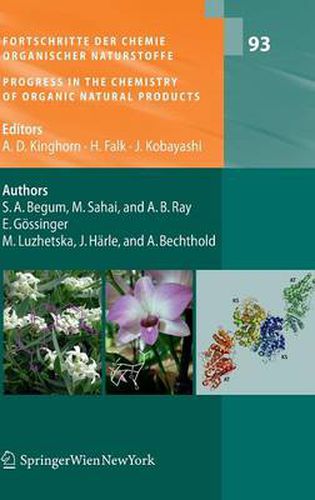Readings Newsletter
Become a Readings Member to make your shopping experience even easier.
Sign in or sign up for free!
You’re not far away from qualifying for FREE standard shipping within Australia
You’ve qualified for FREE standard shipping within Australia
The cart is loading…






This title is printed to order. This book may have been self-published. If so, we cannot guarantee the quality of the content. In the main most books will have gone through the editing process however some may not. We therefore suggest that you be aware of this before ordering this book. If in doubt check either the author or publisher’s details as we are unable to accept any returns unless they are faulty. Please contact us if you have any questions.
Lignans, by convention, are a group of natural products that are formed by linking two phenylpropanoid units (C C units) by oxidative coupling. Most importantly, in 6 3 a lignan, two (C C units) are bound through the central carbon of their side chains, 6 3 0 i. e. the 8 and 8 positions (1, 2). The occurrence of C C -dimers, linked at sites other 6 3 0 than the 8-8 positions, is also known and these compounds have been termed neolignans (3, 4). As these two groups of compounds have close structural as well as biosynthetic relationships, they are often associated together and incorporated under the general term lignan (5). The diverse structural categorization of true lignans and of a few neolignans is presented in Fig. 1. Through the years, several review articles or books covering different facets of lignans, including their ch- istry (6, 7), biogenesis (8), synthesis (9), and biological activities (10) have been published. Enduring research for the investigation of secondary metabolites of plants has evidenced some compounds that are biogenetically related to true lignans or neolignans but bear some features not discerned in conventional lignans. These compounds or groups of compounds have been termed as non-conventional lignans , and include coumarinolignans, ?avonolignans, and stilbenolignans. The non-conventional lignans, like the conventional ones, have two C C units linked 6 3 together but have additional structural features to place them also under the category of coumarins, ?avonoids, or stilbenes.
$9.00 standard shipping within Australia
FREE standard shipping within Australia for orders over $100.00
Express & International shipping calculated at checkout
This title is printed to order. This book may have been self-published. If so, we cannot guarantee the quality of the content. In the main most books will have gone through the editing process however some may not. We therefore suggest that you be aware of this before ordering this book. If in doubt check either the author or publisher’s details as we are unable to accept any returns unless they are faulty. Please contact us if you have any questions.
Lignans, by convention, are a group of natural products that are formed by linking two phenylpropanoid units (C C units) by oxidative coupling. Most importantly, in 6 3 a lignan, two (C C units) are bound through the central carbon of their side chains, 6 3 0 i. e. the 8 and 8 positions (1, 2). The occurrence of C C -dimers, linked at sites other 6 3 0 than the 8-8 positions, is also known and these compounds have been termed neolignans (3, 4). As these two groups of compounds have close structural as well as biosynthetic relationships, they are often associated together and incorporated under the general term lignan (5). The diverse structural categorization of true lignans and of a few neolignans is presented in Fig. 1. Through the years, several review articles or books covering different facets of lignans, including their ch- istry (6, 7), biogenesis (8), synthesis (9), and biological activities (10) have been published. Enduring research for the investigation of secondary metabolites of plants has evidenced some compounds that are biogenetically related to true lignans or neolignans but bear some features not discerned in conventional lignans. These compounds or groups of compounds have been termed as non-conventional lignans , and include coumarinolignans, ?avonolignans, and stilbenolignans. The non-conventional lignans, like the conventional ones, have two C C units linked 6 3 together but have additional structural features to place them also under the category of coumarins, ?avonoids, or stilbenes.